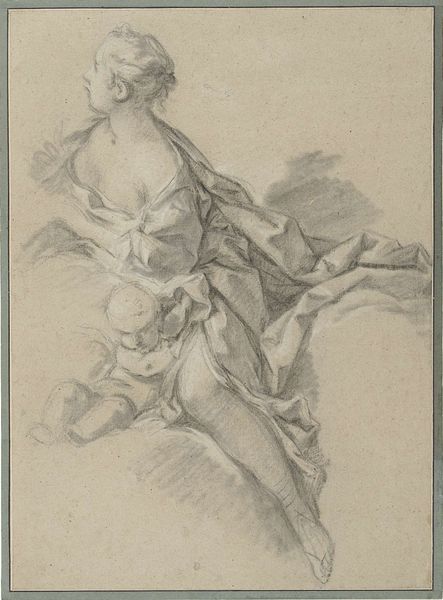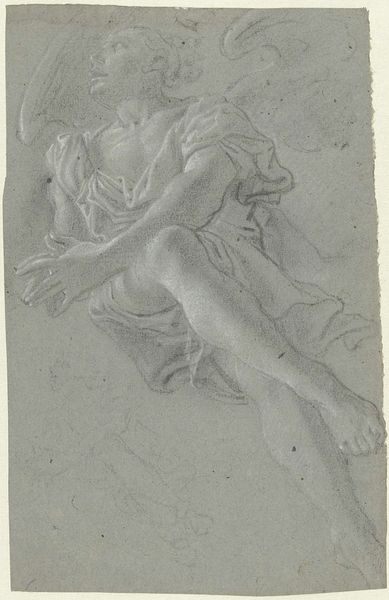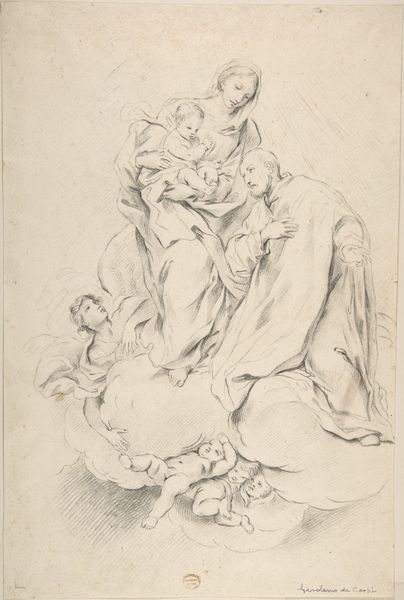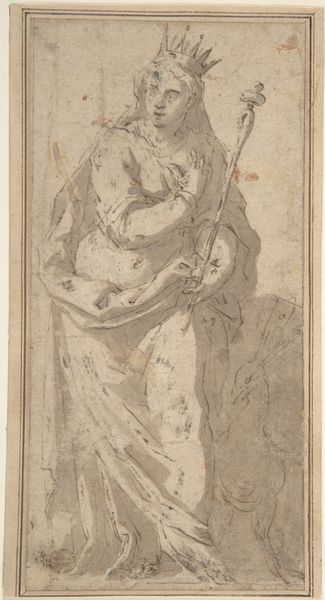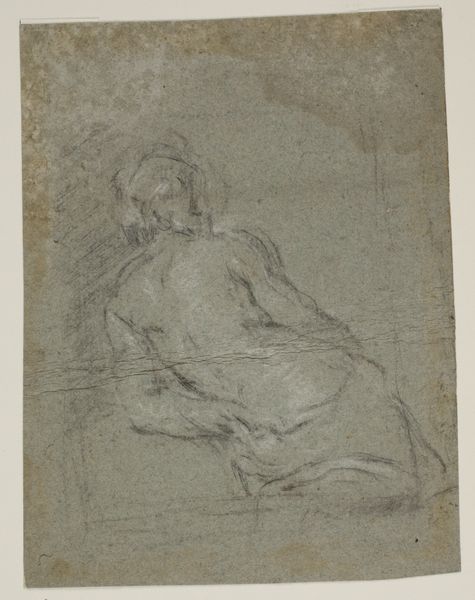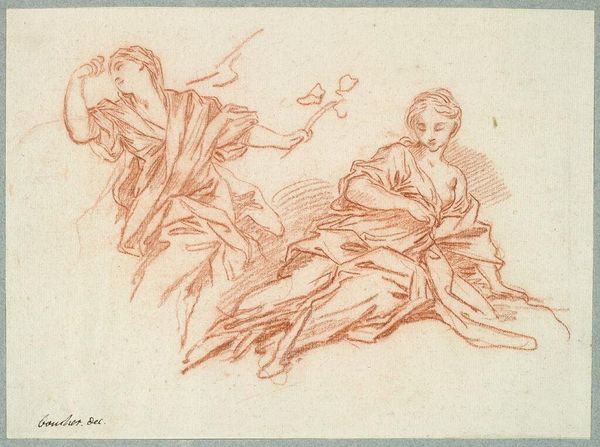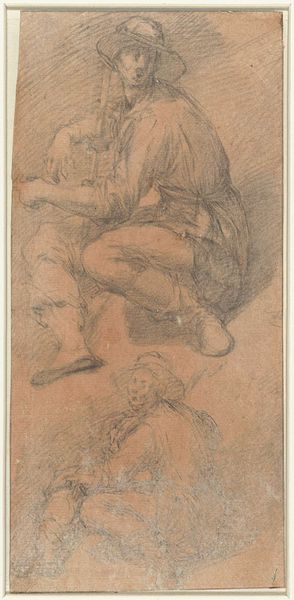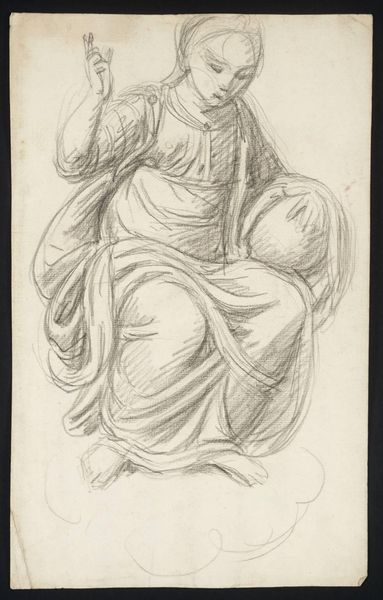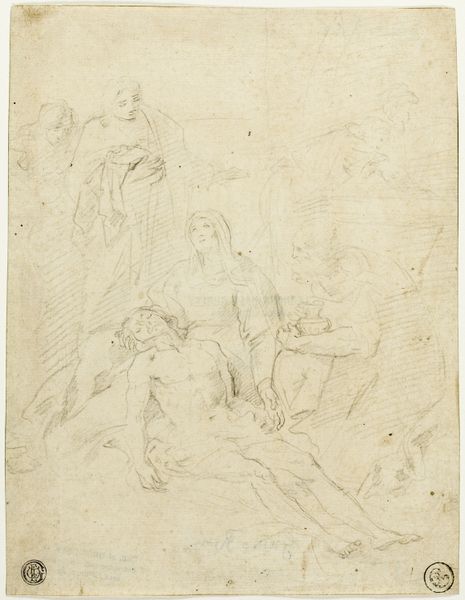
drawing, paper, pencil
#
portrait
#
drawing
#
allegory
#
baroque
#
paper
#
pencil
#
academic-art
Dimensions: height 225 mm, width 155 mm
Copyright: Rijks Museum: Open Domain
Curator: Today, we're looking at "Seated Muse with Harp," a drawing by Charles Le Brun, believed to have been created between 1630 and 1690. Editor: The immediate impression is one of lightness, even ethereality. The soft pencil lines on paper give it an unfinished quality, a sense of a fleeting vision captured. Curator: Le Brun, a prominent figure in the French Baroque era, held significant influence as the director of the Gobelins Manufactory and as the first painter to King Louis XIV. He essentially dictated the artistic style of the French court, emphasizing classical ideals and grand allegorical themes, using art as propaganda and power projection. This drawing reflects that context perfectly. Editor: Agreed, the composition clearly adheres to classical principles of balance and harmony. The pose of the muse, the drapery, even the placement of the putto at her side... it's all carefully considered. Notice how the curves of her body are echoed in the shape of the harp. Curator: The muse is, of course, a powerful figure, but it's also intriguing to consider what this imagery meant in the context of gender dynamics at court. While seemingly celebrating female creativity, were these idealized representations ultimately limiting or empowering for women artists of the time? How were female artists able to thrive when male artists created these depictions for them? Editor: From a purely aesthetic viewpoint, I’m struck by the texture achieved with such simple means. The subtle gradations of tone create a real sense of depth and volume, despite the economy of line. The lines build up the composition to show an idealized form with its formal conventions. Curator: Absolutely. And if we examine the cultural impact of such depictions of muses, it’s impossible to separate them from their role in perpetuating certain societal values and reinforcing gendered expectations around artistic inspiration and expression. Even the way they were patronized says a lot about these female muses. Editor: Seeing the artist’s line, one has an almost direct contact with its moment of inception. It offers a direct line into the process. Curator: It’s pieces like this that offer the richest ground for inquiry into these intersectional areas of Baroque artwork! Editor: I couldn’t agree more; each element connects the art and history so deeply.
Comments
No comments
Be the first to comment and join the conversation on the ultimate creative platform.
